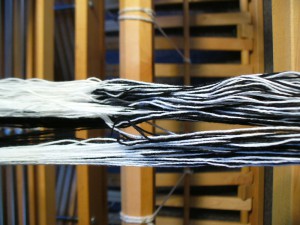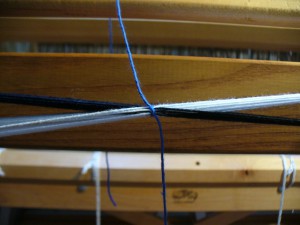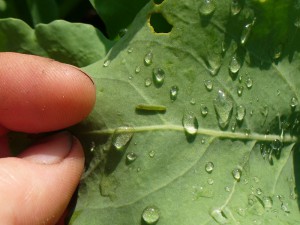July has been a very busy time, what with all the watering (it’s been hot and dry), squishing of bugs, and weeding, not to mention flax harvesting. However, I recently did a tiny bit of weaving for my double-weave study group with the Pioneer Valley Weavers Guild, led by the elegant and brilliant Barbara Elkins.
Doubleweave is a versatile technique that lets you weave two layers of cloth at the same time. The layers can be joined at the right or left edges, joined at both edges, they can be totally separate, or they can exchange periodically (i.e., the bottom layer comes to the top and the top layer goes to the bottom). Our samples used four shafts, which is the minimum number you need.
The whole process has been full of visual surprises, beginning with winding the warp. For our samples, we wound a warp with two alternating colors. I chose black and white for maximum contrast. On the left, below, is the cross with my counting thread. You can see the separation of the white and black layers. On the right is the warp as I was beaming on. The alternating black and white ends get sorted into their respective layers when they go through the lease sticks. In the section of the warp that hasn’t yet been beamed on there is a cool transition between where they alternate and where they become separated. I warp back to front, so this un-separated section is in the front of the loom.




